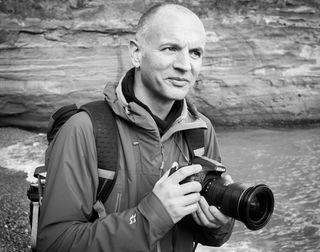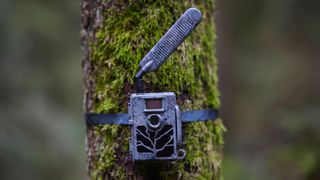
Benedict Brain is a UK-based photographer, journalist and artist. He is an Associate of the Royal Photographic Society and sits on the society’s Distinctions Advisory Panel. He is also a past editor of Digital Camera Magazine, and the author of You Will be Able to Take Great Photos by The End of This Book.
One of the defining characteristics of photography is the ability to capture a moment in time. The still photo can freeze time, unlike any other artistic medium. As technology has advanced, the shutter speeds and frame rates that most cameras can operate at has become staggering.
However, there’s still an art in anticipating, knowing exactly when to press the shutter. It is what the great photographer Henri Cartier-Bresson called the ‘decisive moment’.
Capturing a ‘decisive moment’, in which the elements of an image come together in perfect harmony, is the Holy Grail of many photographers, especially those working in street, photojournalism, sport and wildlife. Some areas of photography are less about a fleeting moment in time and more concerned with light, form, composition, design and storytelling.
Generally, I’d say much of my personal photographic practice is slow, deliberate and mindful, and falls into this latter camp. I even made the conscious decision to use a camera that is slower to handle for that reason: I traded in a seven-frames-per-second camera for a three-frames-per-second medium-format camera, and have never felt frustrated by the slowness. However, I am on occasion seduced by a fleeting moment, and can relish in the idea of striving to capture that often elusive decisive moment.
Taken on a beach in Alaska last summer, this image is one such example. I shot just one frame; I didn’t switch to continuous shooting mode, and felt chuffed to have captured the image at just the right moment.
I had been watching the dog for a while as a friend threw the stick. While they were doing this, I was learning how the animal reacted, and was anticipating the direction of movement. This made it easier and gave me a better chance of capturing the ‘action’.
For me, the relationship between the airborne stick and the dog’s open jaw anticipating the imminent grab, along with the animal’s beautifully arched back set against the Alaskan scenery, works well. Look closely and you’ll even see frozen water droplets flying from the dog’s mouth, adding another layer to this particular decisive moment.
• Other articles in the Art of Seeing series
Read more:
• The 50 best photographers ever
• 100 best photography quotes from famous photographers
• The best coffee-table books on photography






